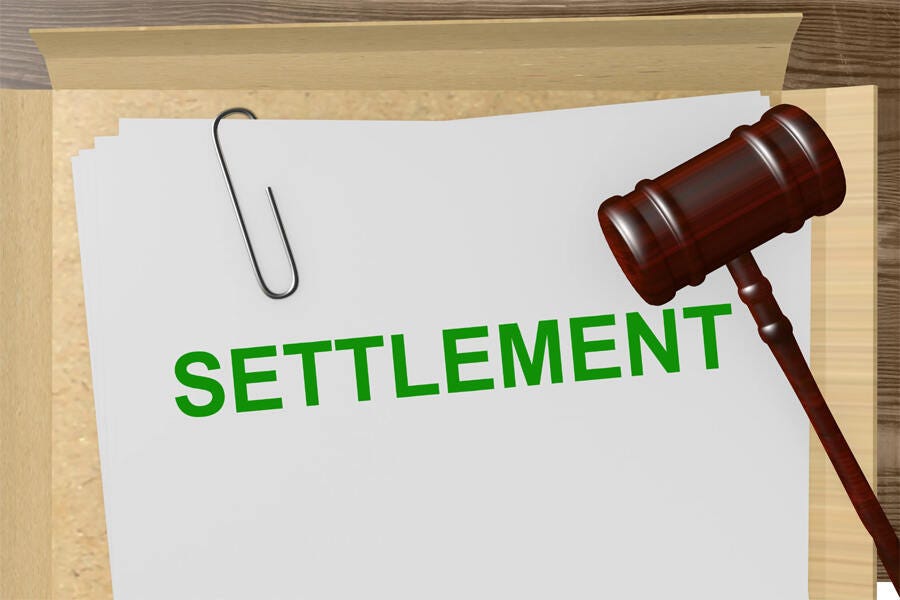Loan settlement is an option available to borrowers facing financial difficulties, allowing them to negotiate with lenders to pay off debts for less than the full amount owed. However, eligibility for loan settlement can vary significantly between secured and unsecured loans. Secured loans, which are backed by collateral, and unsecured loans, which have no collateral, each come with their own set of criteria and considerations when it comes to settling debts. Understanding these differences is crucial for borrowers who are contemplating settlement as a means to regain financial stability.
In this blog, we will explore the intricacies of loan settlement eligibility, focusing on the distinctions between secured and unsecured loans. We will delve into the factors that influence eligibility for settlement, the negotiation process for each type of loan, and the potential consequences of settling a loan. By the end of this guide, you will have a comprehensive understanding of how to approach loan settlement depending on the type of debt you hold, empowering you to make informed financial decisions.
Introduction
In a world where financial challenges can arise unexpectedly, many borrowers find themselves overwhelmed by debt. Loan settlement presents an opportunity to alleviate some of this burden, allowing individuals to negotiate a reduced payment to satisfy their outstanding obligations. However, navigating the settlement process requires a clear understanding of the types of loans involved, particularly the differences between secured and unsecured loans.
Secured loans are backed by collateral—such as property or vehicles—providing lenders with a safety net in case of default. In contrast, unsecured loans, which include personal loans and credit card debts, do not have collateral backing, making them riskier for lenders. This fundamental difference impacts how lenders approach settlements and what criteria they use to determine eligibility.
In this blog, we will examine the various factors that affect loan settlement eligibility for both secured and unsecured loans. We will discuss the characteristics of each loan type, the common eligibility requirements, the negotiation process, and the implications of settling a loan. With this knowledge, borrowers can better navigate their options and make empowered choices in their pursuit of financial relief.
Understanding Loan Settlement Eligibility
What is Loan Settlement?
Loan settlement is a process where borrowers negotiate with their lenders to pay off a debt for less than the total amount owed. This option is often pursued when individuals face financial hardship, such as job loss, medical emergencies, or other unexpected expenses that hinder their ability to meet repayment obligations.
The primary goal of loan settlement is to provide borrowers with a manageable way to reduce their debt burden, often resulting in lower payments or a one-time lump-sum settlement. However, not everyone qualifies for this option, and eligibility criteria can vary based on the type of loan—secured or unsecured.
Factors Influencing Loan Settlement Eligibility
When considering loan settlement, several factors come into play that can affect eligibility:
Financial Hardship: Lenders typically look for evidence of financial difficulties, such as a significant drop in income, unexpected expenses, or a history of missed payments.
Debt Amount: Generally, larger debts are more likely to be negotiated. Smaller debts may not be deemed worth the lender’s time and resources for negotiation.
Loan Type: The nature of the loan—secured or unsecured—plays a crucial role in determining eligibility and the lender’s willingness to negotiate.
Payment History: A borrower’s repayment history, including consistency and any defaults, will influence a lender’s decision regarding settlement.
Lender Policies: Different lenders have varying policies and procedures for loan settlements, which can affect eligibility criteria and the negotiation process.
Secured vs. Unsecured Loans
Understanding the differences between secured and unsecured loans is key to navigating the loan settlement process.
Secured Loans
Secured loans are loans backed by collateral, meaning that the borrower pledges an asset—such as a house or car—to the lender. If the borrower defaults on the loan, the lender has the right to seize the collateral to recover their losses. Common examples of secured loans include:
Home Loans: Mortgages are secured against the property purchased.
Auto Loans: These loans are secured against the vehicle being financed.
Secured Personal Loans: Borrowers can use assets like savings accounts or fixed deposits as collateral.
Eligibility for Settlement:
Borrowers of secured loans may face stricter eligibility criteria for settlement. Lenders may be less inclined to negotiate since they have collateral that can be repossessed.
If a borrower is experiencing financial hardship and has defaulted on payments, lenders may still be willing to negotiate to avoid lengthy foreclosure proceedings.
Unsecured Loans
Unsecured loans do not require collateral, meaning they are granted based on the borrower’s creditworthiness and ability to repay. Since these loans pose a higher risk for lenders, they often come with higher interest rates. Examples include:
Credit Cards: These are revolving lines of credit without collateral.
Personal Loans: Unsecured loans provided based on income and credit score.
Medical Bills: Often considered unsecured debt.
Eligibility for Settlement:
Unsecured loans generally have more flexible settlement options since lenders do not have collateral to recover.
If borrowers demonstrate genuine financial distress, lenders may be more willing to negotiate a reduced payment to recover a portion of the outstanding balance.
Loan Settlement Eligibility for Secured Loans
When it comes to secured loans, the eligibility criteria for loan settlement can be more complex. Here are the key considerations:
1. Evidence of Financial Hardship
To qualify for settlement, borrowers must provide evidence of financial distress. This could include:
Job loss or reduction in income
Medical emergencies leading to significant expenses
Other unexpected financial burdens
Lenders typically require documentation to support these claims, such as pay stubs, medical bills, or termination letters.
2. Current Status of the Loan
The current status of the loan—whether it is in default or overdue—can impact eligibility. Lenders may be more willing to negotiate settlements if:
The borrower is already in default or has missed multiple payments.
There is a genuine risk that the borrower may not be able to recover financially, leading to foreclosure.
3. Remaining Balance and Loan Amount
Larger outstanding balances may increase the likelihood of settlement negotiations. Lenders might prefer to negotiate a reduced payment rather than risk losing the entire amount through foreclosure.
4. Lender Policies
Different lenders have varying policies regarding settlements for secured loans. Some may have established programs for borrowers facing financial difficulties, while others may adopt a more rigid approach. It’s essential for borrowers to understand their lender’s specific policies and procedures before initiating negotiations.
5. Impact of Settling a Secured Loan
Settling a secured loan can have significant consequences. While it may relieve immediate financial stress, borrowers should be aware of the potential implications, such as:
Credit Score Impact: Settling a loan can negatively affect credit scores, as it indicates a failure to repay the loan in full.
Tax Implications: The forgiven amount may be considered taxable income by tax authorities, leading to potential tax liabilities.
Loan Settlement Eligibility for Unsecured Loans
When considering loan settlements for unsecured loans, the eligibility criteria can differ significantly from secured loans. Here are the key factors to consider:
1. Financial Hardship Documentation
As with secured loans, borrowers must provide evidence of financial distress. This may include:
Detailed financial statements
Evidence of income loss or increased expenses
Documentation of any relevant personal circumstances
Lenders will want to see that the borrower is genuinely unable to meet repayment obligations.
2. Default Status
Unsecured lenders are often more flexible when negotiating settlements, particularly if the borrower has missed payments or is in default. Lenders may view settlements as a way to recover some portion of the debt rather than risking a complete loss through bankruptcy.
3. Negotiation Leverage
The leverage during negotiations can vary based on the borrower’s financial situation. Factors influencing leverage include:
Total amount of outstanding debt
Length of time in default
The borrower’s overall financial profile
Borrowers with larger debts may find that lenders are more willing to negotiate in order to recover at least a portion of the total owed.
4. Lender Policies and Practices
Each lender may have different policies regarding settlements for unsecured loans. Some lenders may have formal programs to assist borrowers in distress, while others may handle negotiations on a case-by-case basis.
5. Consequences of Settling Unsecured Loans
Settling unsecured loans can lead to several consequences, including:
Negative Credit Reporting: Similar to secured loans, settling unsecured debts can adversely affect credit scores.
Potential Tax Liabilities: Borrowers should be aware that forgiven debt might be subject to taxation, depending on local laws.
The Negotiation Process for Loan Settlement
1. Preparing for Negotiation
Regardless of the type of loan, borrowers should prepare thoroughly before approaching lenders for a settlement. This includes:
Gathering Documentation: Collect evidence of financial hardship, loan statements, and any relevant correspondence with lenders.
Assessing Financial Capacity: Determine how much you can realistically afford to pay as a settlement.
2. Initiating Contact
Once prepared, borrowers should contact their lenders to discuss their situation. It’s essential to communicate openly and honestly about financial difficulties and express a genuine desire to settle the debt.
3. Proposing a Settlement Amount
During negotiations, borrowers should propose a specific settlement amount. It’s advisable to start lower than what they can afford, allowing room for negotiation.
4. Securing Written Agreement
If a settlement is reached, borrowers must ensure they receive a written agreement detailing the terms. This should include:
The settlement amount
Any remaining balance
Confirmation that the debt will be marked as settled
5. Following Through
After reaching a settlement, borrowers should ensure timely
Get in touch with us today at www.Settleloan.in and embark on your path to financial freedom




I got this web page from my buddy who told me regarding this site and at the
moment this time I am visiting this web page and reading very informative articles or reviews at this place.